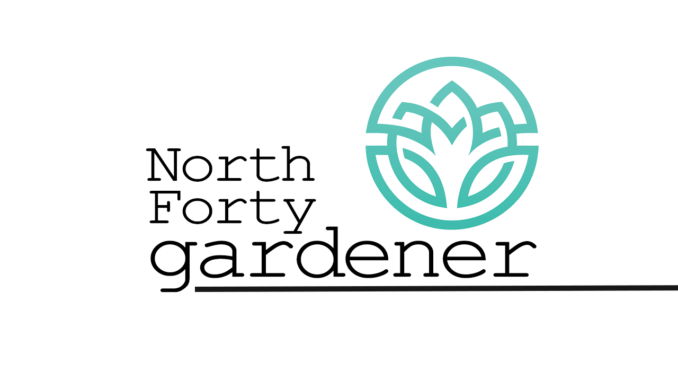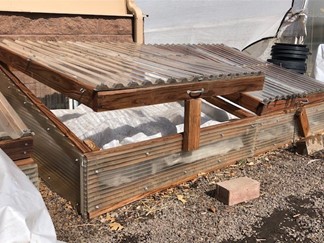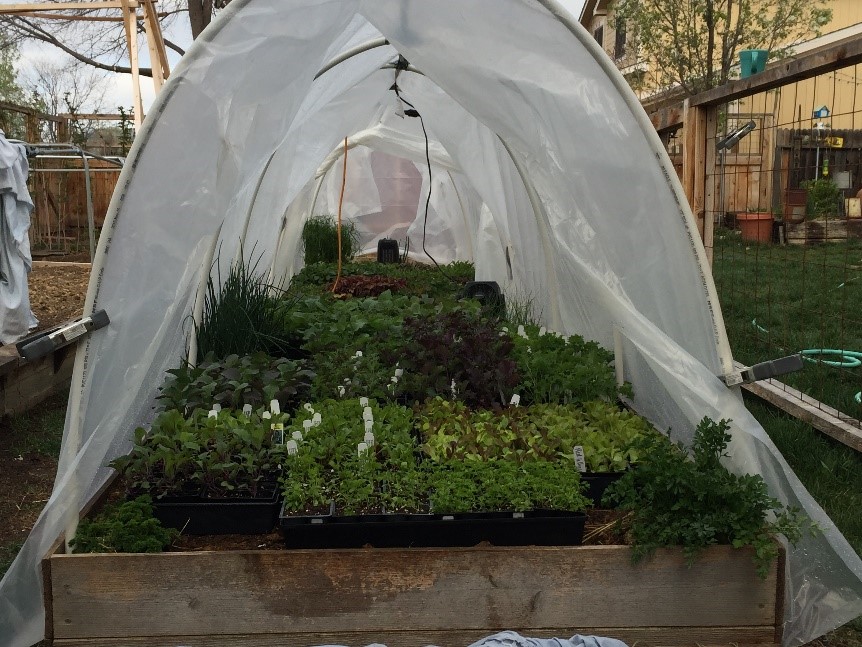
Selena Kunze, Horticulturist, Gardens on Spring Creek
Spring fever comes early for me…as soon as those seed orders are placed, I’m ready to get my hands in the dirt. By using cold frames and hoop houses, I can do that earlier in the growing season. Cold frames and hoop houses are open-bottomed structures that protect plants from colder temperatures by trapping sunlight and blocking wind. Cold frames are commonly hard-sided boxes covered by glass or plastic, while hoop houses are made from a flexible material bent into a tunnel shape and covered by plastic sheeting. Both can be used to plant earlier in the spring and keep things growing later in the fall or even through the winter months.

Cold frames are commonly made from lumber, PVC, cinder blocks, or straw bales. Be sure to avoid using any material treated with creosote or other harmful chemicals that could leach into your soil. Cold frames should be oriented to face south with the south wall shorter than the north wall and should be set on a surface that allows water to drain freely. They can be covered with old windows, shower or storm doors, clear plastic panels or plastic sheeting-covered frames that are hinged on one side to allow the cold frame to be opened and vented.

Hoop houses are usually made from PVC, or galvanized pipe bent into an arc, secured in the ground, and covered by plastic sheeting. Some nurseries sell commercial greenhouse plastic by the foot, but clear painter’s plastic drop cloths or old shower curtains can also be used. Be sure to securely fasten the plastic to the frame or ground, so you don’t lose it in a strong wind. You can also build doors for the ends of your hoop house or use spring clamps to hold the ends of the plastic shut.
With careful planning, hoop houses can be used to grow a cold-season crop or transplants in early spring, followed by heat-loving crops in early summer. I build hoop houses over my raised garden beds and use them to harden off pots of vegetable starts in late spring. I heat the hoop houses with small electric heaters when necessary. Beware – the heaters use a lot of electricity and are not a good long-term solution. I then plant peppers under the hoop houses to keep the heat-loving plants growing while nighttime temperatures are still low. Once summer heat really kicks in, I remove the plastic and replace it with a hail screen to protect my pepper plants from storm damage.
While cold frames and hoop houses can protect plants from cold, they also heat up quickly and should be closely monitored for temperature. You’ll want to open them when outside temperatures reach 45 – 50 degrees. Providing air circulation is also important to prevent fungal issues and maintain healthy moisture levels. Lids and doors should be opened when temperatures allow, and small fans can be added to provide additional airflow. With planning, creativity, and appropriate monitoring, cold frames and hoop houses can extend your growing season by weeks or even months.
Support Northern Colorado Journalism
Show your support for North Forty News by helping us produce more content. It's a kind and simple gesture that will help us continue to bring more content to you.
BONUS - Donors get a link in their receipt to sign up for our once-per-week instant text messaging alert. Get your e-copy of North Forty News the moment it is released!
Click to Donate
